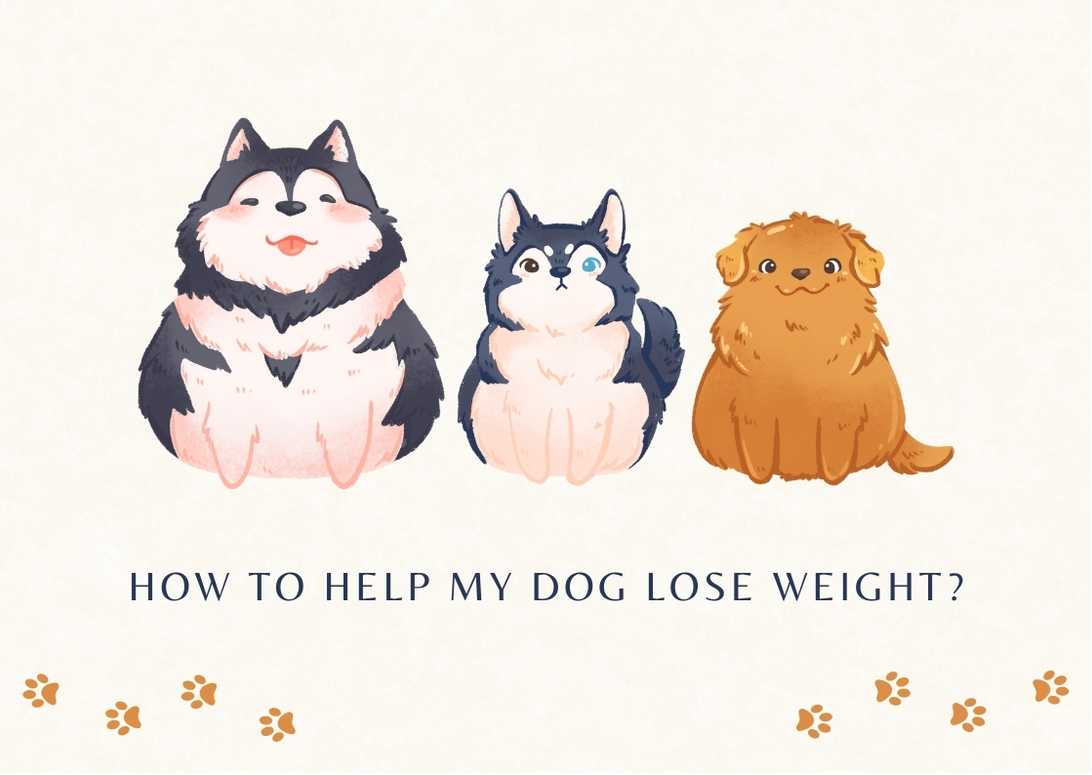How To Train Dog Not To Jump?
I know firsthand how frustrating it can be when your beloved dog just won’t stop jumping on people. It’s embarrassing, and it can even be dangerous if they accidentally knock someone over.
But don’t worry, there are proven methods to train your dog not to jump, and I’m here to guide you through the process.
Now, you might be thinking, ‘But my dog is just so excited to see people! How can I possibly teach them not to jump?’Trust me, I understand that concern. Dogs naturally want to greet others with enthusiasm and excitement. However, with the right training techniques and consistency, we can redirect their energy and establish boundaries that will help them greet others in a calm and controlled manner.
So let’s dive into this step-by-step guide on how to train your dog not to jump.
Important Points
- Consistency in training and establishing boundaries is crucial for teaching a dog not to jump
- Use positive reinforcement techniques, such as rewards and clicker training, to encourage desired behaviors and redirect jumping
- Incorporate regular exercise and mental stimulation to reduce excess energy and excitement that can lead to jumping
- Seek professional help if there is little improvement in the dog’s jumping habits, as experts can provide personalized guidance and strategies
How to Stop Jumping Behavior?
If your dog jumps up, calmly turn away and ignore them until all four paws are on the ground. One effective way to teach alternative greetings is by redirecting their behavior. For example, you can train your dog to sit or lie down instead of jumping up when they want attention. By consistently rewarding them for the desired behavior, such as giving them a treat or verbal praise when they sit politely, they’ll learn that jumping isn’t the appropriate way to get attention.
Another method is using visual cues to discourage jumping. You can hold your hand out in a stop signal or cross your arms to create a physical barrier between you and your dog. This sends a clear message that jumping isn’t acceptable.
Additionally, implementing a consistent exercise routine can help reduce excess energy and excitement in your dog, making it less likely for them to jump up. Regular walks or play sessions provide an outlet for their energy and contribute to their overall well-being.
Incorporating obedience training into daily routines is also crucial in teaching your dog not to jump. Teaching commands like “sit,””stay,”or “down”helps establish boundaries and reinforces good behavior. By practicing these commands regularly, you’re creating a foundation of discipline and respect that translates into other areas of their life.
Lastly, establishing a calm and structured environment plays an essential role in preventing jumping behavior. Dogs thrive in predictable environments with clear rules and routines. By providing consistency in their daily activities, such as feeding times and walks, you create stability that reduces anxiety and impulsive behaviors like jumping.
By implementing these strategies – teaching alternative greetings, using visual cues, maintaining regular exercise routines, incorporating obedience training into daily routines, and establishing a calm environment – you can effectively train your dog not to jump up on people without resorting to punitive measures or harsh corrections. Consistent training methods are key in reinforcing these teachings while building trust between you and your furry companion.
Consistent Training Methods
To establish consistent training methods, it’s essential to employ a steady and unwavering approach that leaves no room for ambiguity. One effective method is using clicker training. By pairing the sound of the clicker with a reward, such as a treat or praise, you can teach your dog not to jump.
Every time your dog keeps all four paws on the ground, click the clicker and immediately give them a reward. This positive reinforcement helps your dog associate staying down with receiving something they enjoy.
Incorporating leash training is another valuable technique in preventing jumping behavior. When approaching someone, keep your dog on a short leash and ensure they remain by your side. If your dog starts to jump, gently pull them back with the leash while firmly saying ‘no’ or ‘off.’ By consistently reinforcing this boundary during walks and encounters with others, your dog will learn that jumping is not acceptable behavior.
Implementing reward-based training techniques further reinforces desired behaviors while discouraging jumping. Whenever your dog greets someone calmly without jumping up, provide them with treats or verbal praise as a form of positive reinforcement. This encourages them to repeat the good behavior in order to receive more rewards.
Utilizing distraction techniques can also be helpful in redirecting attention away from jumping behaviors. For example, if you anticipate that your dog may jump when guests arrive at home, provide them with a toy or engage them in an alternative activity like fetching or playing tug-of-war. Redirecting their focus onto something positive and engaging helps divert their energy away from jumping.
Lastly, establishing a consistent routine is crucial for successful training. Consistency in enforcing boundaries and expectations will prevent any confusion for your dog regarding what behaviors are acceptable and which ones are not. Stick to regular training sessions where you practice commands like ‘sit’ and ‘stay,’ reinforcing calm behavior during greetings consistently across different situations.
By implementing these consistent training methods such as using clicker training, incorporating leash training, implementing reward-based techniques, utilizing distraction techniques, and establishing a consistent routine, you can effectively teach your dog not to jump. Use positive reinforcement as a way to encourage desired behaviors and continue building on these foundations for further obedience training.
Use Positive Reinforcement
Through positive reinforcement, I can encourage my furry friend to maintain all four paws on the ground, leading to a calm and enjoyable interaction. One effective method is using clicker training techniques. By associating the sound of a clicker with a reward, such as a treat or praise, I can communicate to my dog that keeping their paws down is the desired behavior. With consistent practice, my dog will start to understand that when they hear the clicker, they should keep all four paws grounded.
Reward-based training methods are also essential in teaching my dog not to jump. Whenever my dog successfully keeps their paws on the ground, I make sure to reward them immediately with treats or verbal praise. This positive reinforcement reinforces the idea that staying calm and grounded leads to pleasant outcomes.
Additionally, shaping desired behaviors by breaking down the training process into smaller steps can be helpful. For example, I can start by rewarding my dog for simply lifting their front paws off the ground but not jumping up entirely. Gradually, I can increase the criteria until they learn to keep all four paws down consistently.
Incorporating play and exercise into our training sessions is another useful approach. A tired dog is typically less prone to jumping out of excitement or excess energy. Before engaging in any training session focused on preventing jumping, I ensure that my dog has had an opportunity for physical exercise and mental stimulation through activities like walks or interactive playtime. This helps them release pent-up energy and increases their ability to focus during training.
By utilizing clicker training techniques, reward-based methods, shaping desired behaviors, using treats as motivators, and incorporating play and exercise into our training sessions, I’m able to effectively train my dog not to jump up on people in a positive manner. Transitioning into redirecting their energy without stating ‘step,’ it is important to recognize that addressing excessive energy levels can contribute significantly towards reducing jumping behaviors.
Redirecting Their Energy
By channeling their excitement into interactive games and engaging activities, I can steer my furry companion away from leaping up and redirect their energy in a more positive direction. Instead of jumping on me or others, I can provide mental stimulation by playing games like hide-and-seek or puzzle toys that require problem-solving skills. This not only keeps them physically active but also engages their mind, keeping them focused and less likely to jump.
Additionally, appropriate exercise is crucial in redirecting their energy. Taking them for walks, runs, or engaging in other physical activities helps release pent-up energy that may otherwise be directed towards jumping. Regular exercise not only tires them out but also promotes overall well-being.
Furthermore, when my dog gets too excited and starts to jump, I can use calming techniques to redirect their behavior. Deep breathing exercises, gentle massages, or even practicing basic obedience commands can help them relax and regain control over their impulses. It’s important to remain patient and consistent with these techniques to effectively teach my dog alternative behaviors.
In addition to mental stimulation and appropriate exercise, another effective way to redirect my dog’s energy is by teaching them alternative behaviors through positive reinforcement training. For instance, when they start to jump up on me or others, I can redirect their attention by offering a toy or treat as an alternative focus point. By consistently rewarding them for choosing the toy instead of jumping up, they’ll learn that this behavior leads to a positive outcome.
By incorporating mental stimulation, appropriate exercise, calming techniques, redirecting to a toy, and teaching alternative behaviors into our training routine together with the method mentioned earlier about not rewarding jumping up behavior, I can set clear boundaries for my dog without using force or punishment-based methods.
Setting Boundaries
Establishing clear boundaries with your furry companion is essential in curbing their jumping behavior and promoting a respectful interaction between you and them. Dogs thrive on consistency, so it’s crucial to maintain a consistent approach in training. By setting clear rules and boundaries, you can effectively communicate what’s acceptable behavior and what’s not. Consistency helps your dog understand what’s expected of them, allowing them to feel secure and confident in their actions.
Managing and redirecting excitement in dogs is another important aspect of training them not to jump. Excitement can often trigger jumping behaviors, so it’s crucial to redirect that energy into alternative outlets. Engaging your dog in mentally stimulating activities such as puzzle toys or obedience training can help channel their excitement into more controlled behaviors. Additionally, providing regular exercise and playtime will help burn off excess energy, reducing the likelihood of jumping.
Encouraging calm and controlled behavior should be rewarded while ignoring the jumping behavior. By reinforcing alternative behaviors such as sitting or offering a paw instead of jumping, you’re teaching your dog that these calmer actions result in positive attention. This approach encourages your dog to learn self-control and promotes a more harmonious relationship between you both.
Transition: Now that we’ve established the importance of setting boundaries with our dogs, let’s move on to the next step: ignoring the jumping behavior without rewarding it directly.
Ignoring the Behavior
Ignoring the jumping behavior is key in teaching your furry friend appropriate and respectful ways to seek attention. By not giving any attention or reward when your dog jumps, you’re sending a clear message that this behavior isn’t acceptable. Here are three important aspects to consider when ignoring the jumping behavior:
- Differentiating between jumping and playfulness: It’s essential to understand that dogs may jump out of excitement or as a way of initiating play. However, it’s crucial to establish boundaries and teach them that jumping isn’t an appropriate way to seek attention.
- Understanding the underlying reasons for jumping behavior: Dogs may jump because they want attention, are seeking physical contact, or simply have excess energy. By recognizing these underlying reasons, you can address them more effectively.
- Teaching alternative behaviors to replace jumping: Instead of allowing your dog to jump, encourage them to engage in alternative behaviors such as sitting or offering a paw for a shake. Consistently reinforcing these alternative behaviors will help your dog understand what’s expected of them.
Consistency in ignoring the jumping behavior is vital for successful training. Whether it’s you, family members, or visitors, everyone should follow the same approach of not acknowledging or rewarding the jumping behavior. This consistency reinforces the message that jumping won’t result in attention or interaction.
To address jumping behavior in different environments, it’s important to practice ignoring the behavior consistently regardless of where you are. Whether at home, on walks, or visiting friends’ houses, maintain the same expectations and responses towards your dog’s jumps. This consistency will help them generalize their understanding that jumping is inappropriate behavior.
By consistently ignoring the jumping behavior and teaching alternative behaviors instead, you can guide your dog towards more polite ways of seeking attention and interaction. However, if you find that despite consistent efforts there’s been little improvement in your dog’s jumping habits, seeking professional help can provide additional guidance and strategies tailored specifically for your furry friend’s needs without writing ‘step’.
Seeking Professional Help
If you’re struggling to address your dog’s jumping behavior, it may be beneficial to seek professional help from a trained expert who can provide personalized guidance and strategies. Understanding the underlying reasons for jumping is key in effectively addressing this issue. A professional can help you identify if your dog is jumping out of excitement, anxiety, or a need for attention. By understanding the root cause, you can implement targeted training techniques to modify their behavior.
Another important aspect that professionals emphasize is the role of socialization in preventing jumping. Dogs that are well-socialized from an early age are less likely to jump on people as a means of greeting or seeking attention. A trainer can guide you on how to properly expose your dog to different environments, people, and animals to ensure they develop appropriate social skills.
Addressing jumping may also be part of a larger behavior issue that needs to be addressed holistically. A professional can assess your dog’s overall behavior and create a comprehensive training plan that addresses not only jumping but also other problematic behaviors.
Additionally, exercise plays a crucial role in reducing jumping behavior. Adequate physical activity helps drain excess energy and promotes mental stimulation, which can reduce the urge to jump excessively. A trainer can advise you on suitable exercise routines based on your dog’s breed, age, and health condition.
Lastly, seeking professional help allows you to learn specific techniques for managing jumping in different situations. Whether it’s at home when guests arrive or during walks when encountering other dogs or strangers, a trainer will teach you effective methods such as redirecting attention, teaching alternative behaviors like sitting or staying calm with distractions.
By consulting with an expert who understands the complexities of canine behavior and training techniques tailored to individual dogs’ needs, you’ll have the best chance at successfully curbing your dog’s jumping habits and improving their overall obedience and social skills.
Frequently Asked Questions
Can I use punishment to stop my dog from jumping?
Using punishment to stop a dog from jumping may have short-term effectiveness, but it can damage the owner-dog relationship and lead to long-term negative effects. It’s better to focus on alternative training methods and positive reinforcement techniques.
How long does it usually take to train a dog to stop jumping?
Training a dog to stop jumping varies based on the individual dog and their behavior. However, consistency, effective training techniques, understanding the reasons behind jumping, and avoiding common mistakes can speed up the process.
Will ignoring my dog’s jumping behavior really make a difference?
Ignoring my dog’s jumping behavior can make a difference in training. By consistently using positive reinforcement techniques and redirecting their energy, I can teach them not to jump. Socialization and addressing underlying reasons are also crucial for preventing jumping behavior.
Can I train my dog not to jump on certain people but allow it with others?
Yes, you can train your dog to differentiate between allowed and prohibited jumping. By establishing consistent boundaries and using positive reinforcement, you can reinforce positive jumping behavior towards certain individuals while discouraging it with others. Additionally, managing jumping behavior in social settings is key by redirecting attention and providing alternative greetings.
Are there any specific breeds that are more prone to jumping behavior?
Certain breeds, such as Labrador Retrievers and Golden Retrievers, are known to be more prone to jumping behavior. To discourage jumping, redirect their attention with toys or treats and consistently reinforce positive behaviors.
Conclusion
In conclusion, training your dog not to jump can be a challenging but rewarding endeavor. By following the steps outlined in this article, you can establish a strong foundation of discipline and respect with your furry friend.
Consistency is key when it comes to teaching them appropriate behavior, so make sure to consistently reinforce boundaries and use positive reinforcement.
Remember, redirecting their energy is vital in preventing jumping behavior. Engaging them in physical activities and providing mental stimulation will help channel their excitement into more appropriate outlets. Additionally, setting clear boundaries and ignoring jumping behaviors will send a message that this kind of behavior is not acceptable.
If you find yourself struggling with training or if your dog’s jumping behavior persists despite your efforts, don’t hesitate to seek professional help. A qualified trainer or behaviorist can provide guidance tailored specifically to your dog’s needs.
So don’t despair! With patience, consistency, and the right techniques, you can train your dog not to jump. Enjoy the journey of bonding with your furry friend while establishing a calm and controlled greeting routine that everyone will appreciate. Remember: practice makes perfect!







